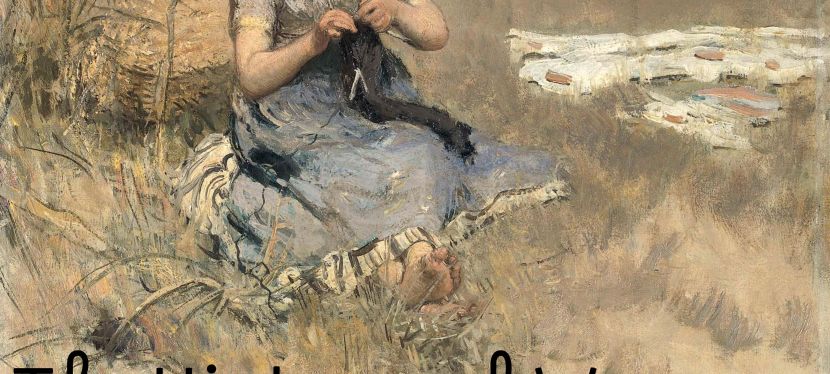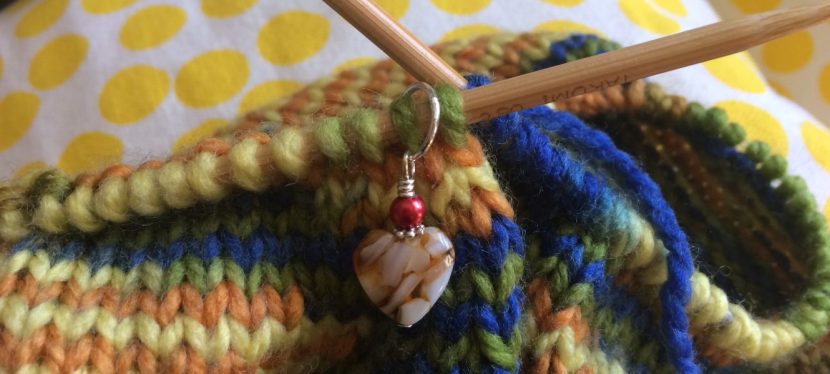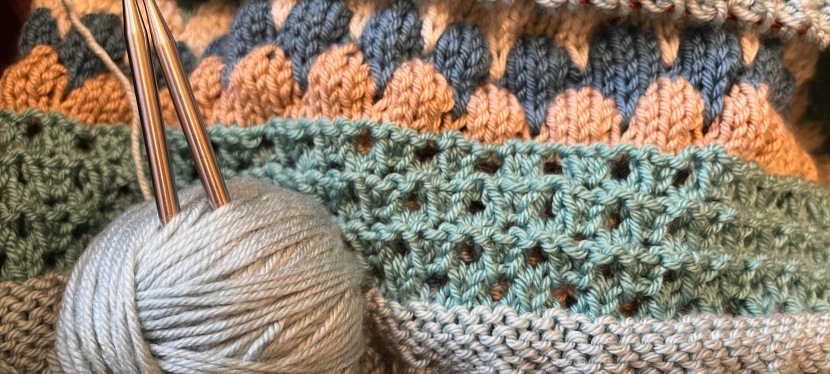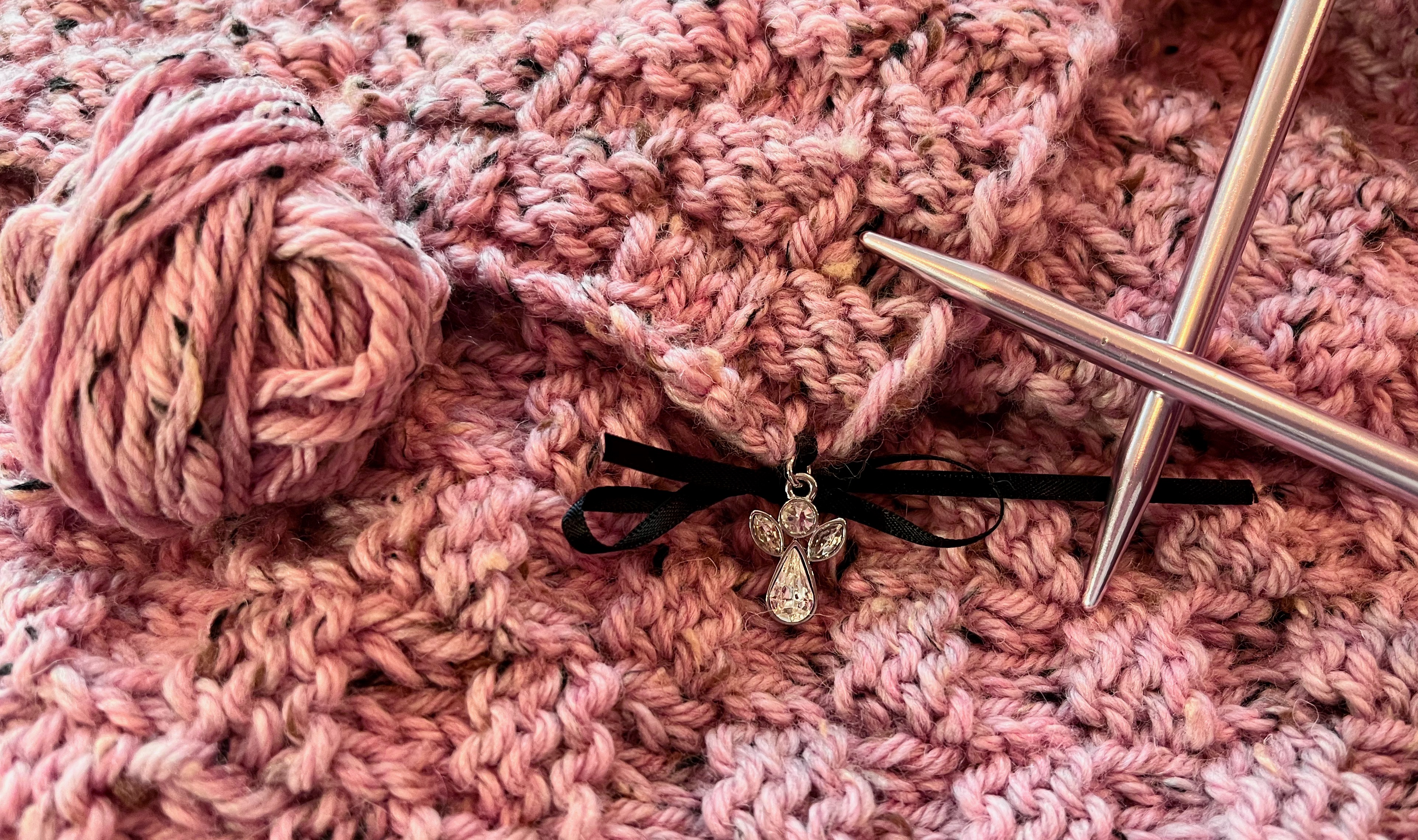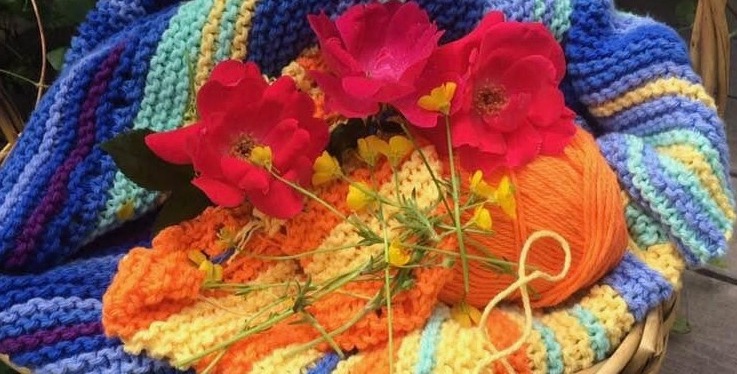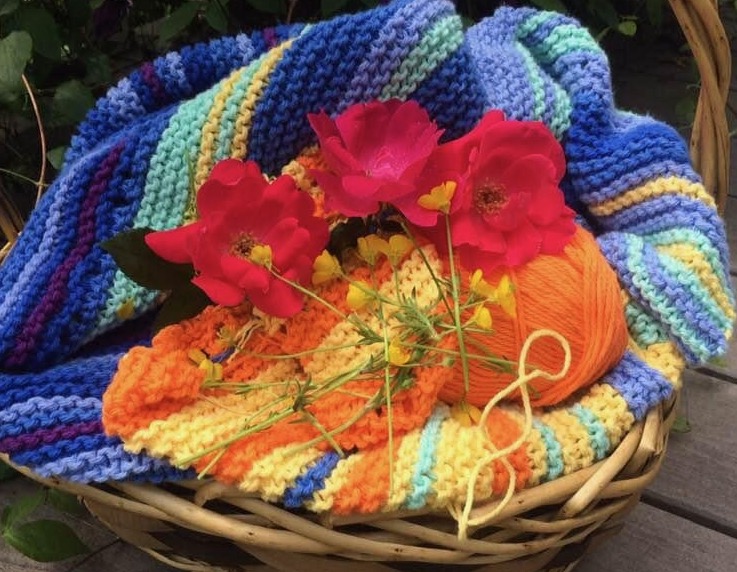Do you have unfinished knitting projects on your needles with holiday deadlines looming? Are you chewing up all your TV time in the evening, knocking out those scarves you need to stick a gift tag on by Christmas? Are you picking up the knitting needles during morning coffee breaks, during that ten minutes you’ve got before the next Zoom meeting, or making the most of the school pick-up line to get in a few rows of knitting? Yeah, me too.
My church plans to give twenty homeless teenagers handknit scarves for Christmas. We’ve got twelve scarves turned in and ready to go. But there’s another eight to go. And so I engage in near frantic knitting to help my fellow church knitters make up the difference. Having a homeless teenager show up to a Christmas party and NOT get a handknit scarf like everybody else is not an option. I’ve got two skeins of super bulky yarn headed for my mailbox, so I’m thinking size 13 or 15 needles and knock out a couple of scarves in 48 hours. Fingers crossed!
This hurried style of knitting is not my favorite thing to do. I’m more of a meditative knitter. But when the call goes out for a good cause, it’s what we do. Yes, we knit for ourselves. Most of us knit for the sense of peace and calm we get when we sit down to knit and unwind, away from the stresses of the world. We knit for a sense of accomplishment, for creative expression, or maybe just to have something constructive to do.
But our best knitting is for others. We knit to welcome a new baby. We knit to comfort a ninety-year-old woman in a nursing home. We knit to show a husband or son or daughter our love for them with a sweater or pair of socks. We knit to show a homeless teenager that someone out there cares that they stay a little warmer this winter.
So we knit, maybe frantically, maybe powering through our “not-most-enjoyable” knitting sessions. We knit to give. We knit to show our love. It’s a good thing.
Holiday Blessings for Your Knitting Projects of Love, Cindy
Cynthia Coe is the author of The Prayer Shawl Chronicles, interrelated stories about knitters and those for whom they knit and love. The sequel to this book, The Knitting Guild of All Saints, has been released! Available in paperback and on Kindle, included in Kindle Unlimited.


